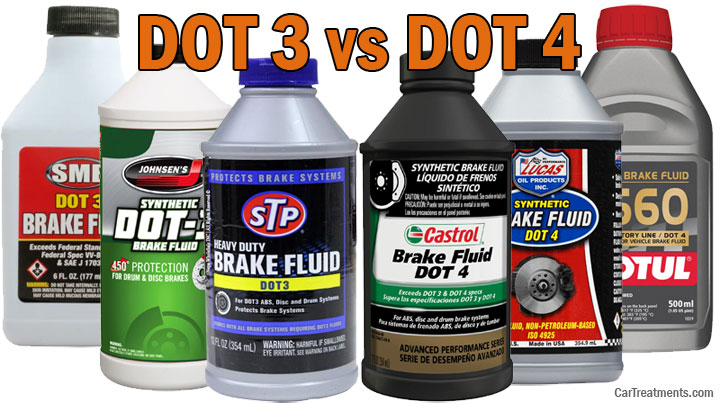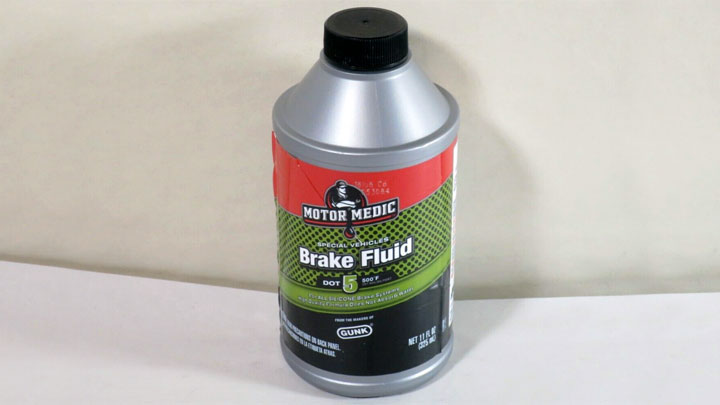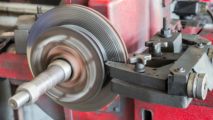Last Updated on March 1, 2021
Brake fluid is something that all vehicles have, no matter if you’re driving a car, truck, or motorcycle. The job of brake fluid is to move the crucial components of your braking system which are responsible for slowing down your vehicle when you press on the brake pedal.
Basically, the fluid causes the pistons in the braking system to apply pressure to the rotors so that your vehicle is able to slow down.
Brake fluid is always subjected to a fair amount of heat. However, there is only so much heat it can take before it starts to boil. Once this happens, the fluid will form air bubbles which will make it compressible.
Brake fluid is not supposed to be compressible. Therefore, if you have brake fluid with air bubbles in it, then pressing down on the brake pedal will cause this air to compress causing the vehicle to have a harder time slowing down.
If the brake fluid is severely overheated, then the vehicle won’t respond at all to the brake pedal being pressed which can result in an accident.
Differences Between DOT 3 and DOT 4 Brake Fluid
There are two main different types of brake fluid that are used by most auto manufacturers. There is DOT 3 brake fluid and DOT 4 brake fluid. Here are the main differences between the two types of fluid.
See Also: DOT 5 Brake Fluid Compatibility
#1 – Boiling Point

DOT 4 brake fluid has a higher boiling point than DOT 3 brake fluid. If you tend to do a lot of heavy braking with your vehicle, then DOT 3 brake fluid could easily boil which would result in the complications noted above.
Dot 4 brake fluid is more reliable when you’re regularly doing a lot of heavy braking because it doesn’t boil as easily. Car owners who are involved in autocross or lapping days at the track will definitely require a brake fluid with a high boiling point.
#2 – Chemical Components
DOT 3 brake fluid is made from ether and polyalkyelen glycol being mixed together. This mixture creates a brake fluid that can handle wet conditions and average heated conditions.
DOT 4 brake fluid is made of borate and glycol. This mixture makes the brake fluid more stable and able to handle higher temperatures.
#3 – Car Types
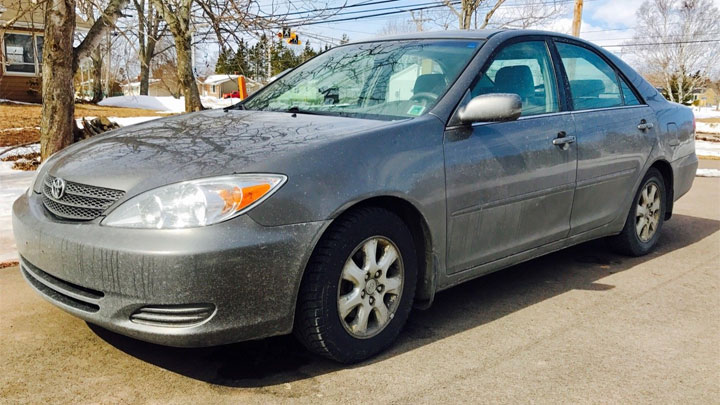
The average economy car will use DOT 3 braking fluid because in general, the cars require less stopping power and the driver won’t be braking aggressively very often.
However, you can expect to see DOT 4 braking fluid in police cars, motorcycles, and racing cars; since they all brake more frequently and aggressively. Always follow the vehicle manufacturer’s recommendation as to what type of brake fluid to use.
#4 – Boiling Capacity
DOT 3 braking fluid contains both a great wet boiling capacity and dry boiling capacity. This means the fluid will work well when it’s exposed to water and the open air.
DOT 4 braking fluid is best when it comes to a dry boiling capacity. Unfortunately, its wet boiling capacity is not so great.
Changing Brake Fluid
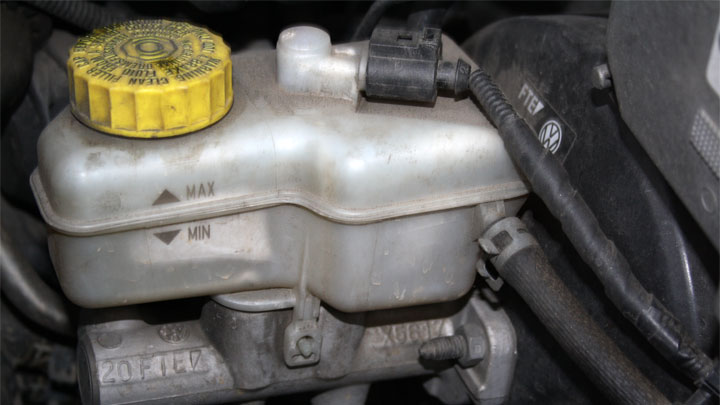
A lot of people don’t think that they ever need to change their brake fluid and this is completely wrong. Like engine oil, brake fluid will attract impurities and eventually break down.
You’ll want to perform a brake fluid flush according to the manufacturer’s stated interval.
A brake fluid flush is essentially the process of replacing old brake fluid with fresh new fluid. It’s a bit trickier than an oil change and there’s no embarrassment having the pros perform the service if you’re not confident enough in your abilities to do it yourself.
Sometimes the brake fluid level drops when you have worn brake pads. Your brake fluid reservoir will have marks which are usually labeled “MAX” and “MIN or “FULL” and “ADD.”
If the brake fluid level is around the “MIN” line, then it means you need to top off your brake fluid. But before you do so, check the condition of the fluid to make sure you don’t need to change it out.
The filler cap will indicate whether the manufacturer recommends DOT 3 brake fluid or DOT 4 brake fluid. You can also find this information in your owner’s manual.
Using the Wrong Brake Fluid
If you realized that you put the wrong brake fluid in your vehicle, the first thing you should do is take the vehicle to the nearest auto repair shop or shop that specializes in brakes and have them drain it for you.
Not only that, you’ll want the mechanic to run a diagnostic check on your braking system to see if any of the components were damaged from the wrong braking fluid being used.
Even though your brakes may have felt like they worked on the way there, it doesn’t mean they will keep on working over the next several days or weeks.
That is why you need to change the brake fluid right away to avoid any potential problems that may occur.

